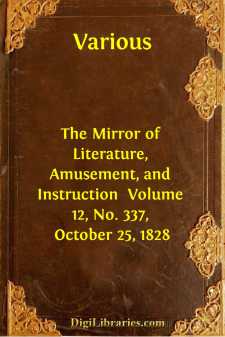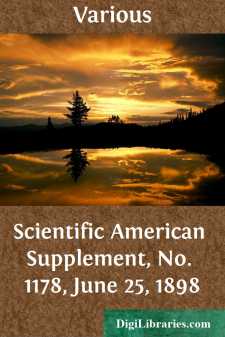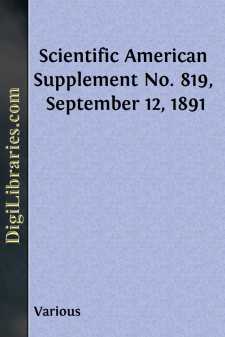Categories
- Antiques & Collectibles 13
- Architecture 36
- Art 48
- Bibles 22
- Biography & Autobiography 813
- Body, Mind & Spirit 142
- Business & Economics 28
- Children's Books 17
- Children's Fiction 14
- Computers 4
- Cooking 94
- Crafts & Hobbies 4
- Drama 346
- Education 46
- Family & Relationships 57
- Fiction 11829
- Games 19
- Gardening 17
- Health & Fitness 34
- History 1377
- House & Home 1
- Humor 147
- Juvenile Fiction 1873
- Juvenile Nonfiction 202
- Language Arts & Disciplines 88
- Law 16
- Literary Collections 686
- Literary Criticism 179
- Mathematics 13
- Medical 41
- Music 40
- Nature 179
- Non-Classifiable 1768
- Performing Arts 7
- Periodicals 1453
- Philosophy 64
- Photography 2
- Poetry 896
- Political Science 203
- Psychology 42
- Reference 154
- Religion 513
- Science 126
- Self-Help 84
- Social Science 81
- Sports & Recreation 34
- Study Aids 3
- Technology & Engineering 59
- Transportation 23
- Travel 463
- True Crime 29
The Mirror of Literature, Amusement, and Instruction Volume 12, No. 337, October 25, 1828
by: Various
Categories:
Description:
Excerpt
Cheese Wring.
(To the Editor of the Mirror.)
In presenting your readers with a representation of the Wring Cheese, I offer a few prefatory remarks connected with the early importance of the county in which it stands, venerable in its age, amid the storms of elements, and the changes of religions. Its pristine glory has sunk on the horizon of Time; but its legend, like a soft twilight of its former day, still hallows it in the memories of the surrounding peasantry.
Cornwall is allowed by antiquaries to be the Capiterides; and the Abbé de Fontenu, in the Memoires de Literature, tom. vii. p. 126, proves, according to Vallancey, that the Phoenicians traded here for tin before the Trojan war. Homer frequently mentions this metal; and even in Scripture we have allusions to this land under the name of Tarshish (Ezekiel, c. xxvii., v. 12-25), being the place whence the Tyrians procured various metals, and among the rest, the English metal tin. It appears that the primitive Greeks had a clearer knowledge of these shores than those in after years; and although Homer, in his shield of Achilles, describes the earth surrounded by water, yet Herodotus, notwithstanding his learning and research, candidly states his ignorance in the following words:—"Neither am I better acquainted with the islands called Capiterides, from whence we are said to have our tin." The knowledge of these shores existed in periods so remote, that it faded. We dwindled away into a visionary land—we lived almost in fable. The Phoenician left us, and the link of our history was severed. Hyde de Religione Vet. Persarum, c. iv. p. 121, supposes Solomon to have traded with the Peruvians; and the analogies between the Pyramids in Mexico and Egypt confirm the opinion, and sanction the belief that the ancients had a more extended knowledge of, and a greater traffic over, the earth than history records. In the most early ages, worship was paid to stone idols; and the Pagan introduction of statues into temples was of a recenter date. The ancient Etruscans, as well as the ancient Egyptians, revered the obeliscal stone, (the reason why to the obeliscal stone is given by Payne Knight, in his extraordinary work;) nor was it, according to Plutarch, till 170 years after the founding of the city that the Romans had statues in their temples, their deities being considered invisible. Many stone pillars exist in this country, especially in Cornwall; and it is a fair inference that the Phoenician imported his religious rites in return for his metallic exports—since we find mention made of stone pillars in Genesis, xxviii. v. 20; Deuteronomy, xxvii. v. 4.; Joshua, xxiv.; 2 Samuel, xx. v. 8.; Judges, ix. v. 6., &c. &c. Many are the conjectures as to what purport these stones were used: sometimes they were sepulchral, as Jacob's pillar over Rachel, Gen. xxxv. 20. Ilus, son of Dardanus, king of Troy, was buried in the plain before that city beneath a column, Iliad, xi. 317. Sometimes they were erected as trophies, as the one set up by Samuel between Mizpeh and Shen, in commemoration of the defeat of the Philistines; one was also erected at Murray, in Scotland, as a monument of the fight between Malcolm, son of Keneth, and Sueno the Dane....












